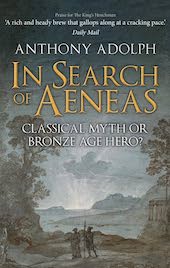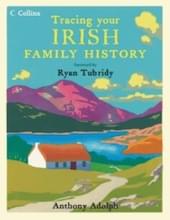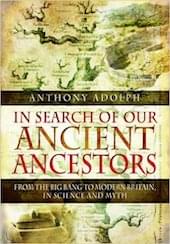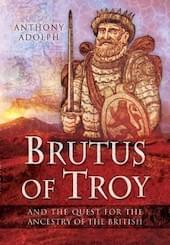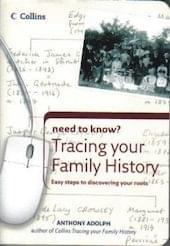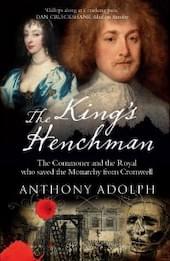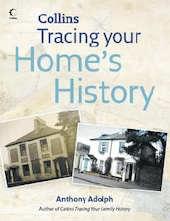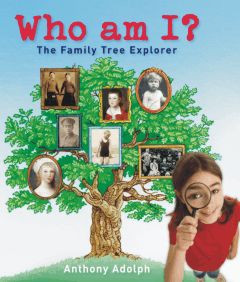 Published by Quercus, 14 May 2009
Published by Quercus, 14 May 2009
ISBN-10: 1847245099
ISBN-13: 978-1847245090
208 pages, price £14.99.
Written by Anthony Adolph
The book was chosen as Book of the Week on The Ultimate Book Guide in August 2009, and was one of Blue Peter’s Top Three Summer Books for 2009.

This book was written for children aged from eight to 12, though with the hope that it will make an interesting introduction to genealogy for children of all ages, from eight to more like 100.
This is a short interview about the book, created by Completely Novel: Interview.
PART ONE: PLANTING THE FAMILY TREE
What Granny remembers: oral history

The Author
The book starts by explaining how the roots of genealogy lie in oral tradition, as told by the grannies of our cave-dwelling ancestors who lived thousands of years ago, and also as told by our own grannies today. We learn how to remember our ancestry, as told by our own older relatives, Maori style.
Writing down your family story
We then discover how people started writing their genealogies down in Sumerian, Greek and Roman times, how the practise spread to Britain, and why Julius Caesar believed he was descended from a goddess. We learn how to write down our own family information on specially provided Family History Forms.
Making your family tree
Chapter three explains how the Romans started recording their genealogies as diagrams called stemmas, and how these became family trees. We learn how to make family trees in modern and Medieval fashion, and also how to make stemmas, thus resuscitating a practise that has been forgotten in the British Isles for one-and-half thousand years.
Grandpa’s sister’s daughter: who’s who in your family?
We next explore complicated family relationships, from great grandparents to third cousins twice removed, and learn all about ancestral uncles, in particular one of Prince William’s – Dracula! We discover how to store family history information in a Family History Box.
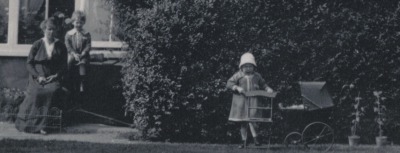
Old photographs: making an illustrated family tree
What did your ancestors look like? This chapter explores old family pictures and photographs, how to find them and what they can tell you. The activity section explains how to make a family tree illustrated with family pictures, so we can see how we do (or don’t) resemble our relatives.
Of mice, drawfs and wizards… family history in stories
 Many children’s stories, from Harry Potter to The Lord of the Rings, have a solid kernel of family history. We see how genealogy has been important to stories, from the time of Homer and Virgil, and make up an imaginary story and family tree of our own.
Many children’s stories, from Harry Potter to The Lord of the Rings, have a solid kernel of family history. We see how genealogy has been important to stories, from the time of Homer and Virgil, and make up an imaginary story and family tree of our own.
PART TWO: GROWING THE FAMILY TREE
Where do I come from?
Family trees show how far our ancestors have travelled. What’s true of Genghis Khan and Princess Pocahuntas is true of us all. The further back you go up the different lines, the more of the world becomes part of your own history. We can show this by making a Star Map, plotting where our ancestors and relatives lived.
The family tree of life
Family trees aren’t just about modern humans: we can trace our ancestry back to the earliest humans, and discover how we are related to Neandertals and the human species nicknamed ‘Hobbits’. We can trace our earlier ancestry back through countless generations of small furry mammals and giant labyrinthodonts, like those below, to the very origins of life of Earth. We can even draw our own Family Tree of Life, showing how we are related to our favourite pets.
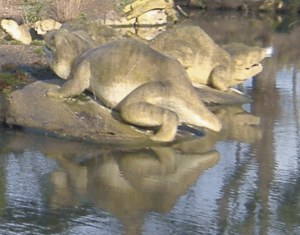
Family trees through time
Our family trees link us to the past. Events in world history are not big and impersonal: they affected important families like the House of Stuart, and they affect our own families too. We can find out more about this by looking at a Timeline, and personalising it with our own family events.
Life in the past
From schools to loos, work and holidays, money and wars, and religious celebrations of all faiths, the way we live keeps changing, and family history is the best way of learning about this. We can explore this by writing the story of one of our grandparents, focussing on the way they lived.
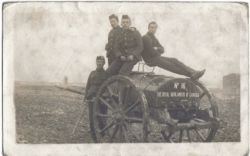
Names, and what they really tell us
Why do we have names? How can we find out what they mean? We look at first names, middle names, nicknames and surnames from around the world, including some funny surnames like Rabbit and Mole. We can play a game to find out how surnames developed from their origins to what they are today.
Things that we inherit
The way we look is inherited from our parents, but so too are many of the things we say, think, believe and do every day. We can explore the things we inherit, from family heirlooms to tartans, and design our own coat of arms.

Using and understanding old records
All sorts of family papers lie undiscovered on your loft, or those of your relatives. This chapter explains what sorts of records exist, from birth records to memorial cards and wills, and what they can tell us about our ancestors. To learn more about censuses, we can take a special census of our own family, using the form provided.

Where next?
It’s now time to go out and look at the places where your family used to live and, if you want, to start looking for records in archives. This book is not a guide to research in archives or on-line, because this simply cannot be simplified for younger readers – but it is hoped that any child who has read this book will be inspired to follow up the suggestions for ‘further reading’ and take the next steps on the journey themselves.
Available from all good bookshops, Amazon and so on!
Who Am I was the subject of a talk for children given by Anthony Adolph on 17 September 2009 at the Cheltenham Literature Festival, and another at the Edinburgh Book Festival on 29 August 2010.
REVIEWS of Who Am I?
Sarah Williams, editor of BBC Who Do You Think You Are? Magazine (June 2009, p. 88) wrote:
“At last: a family history book for children that really can inspire an interest in the subject.
Every now and again a book that promises to encourage young people to investigate their family history arrives on my desk and each time I wonder whether to review it. Some of them are dreary, some rather amateur and some feel like textbooks keen to point out that they comply with Key Stage 2. I wave them in front of my daughter but get little response. This book, however, is in a different league. It is head and shoulders over any other children’s family history book I have seen. Adolph seems to understand eight year-olds (my guess is this book is for eight to 10 year-olds and maybe even a bright seven year-old) and keeps the interest going on every page. There’s Dracula, Genghis Khan, Harry Potter and Frodo Baggins here as well as the usual Victorians.
You can’t expect children to do any family history research apart from asking parents and grandparents questions and Adolph knows this. What he does is encourage an interest in the idea of genealogy by explaining its importance in the past and in other cultures, by looking at physical inheritance (we had my daughter on the phone to grandpa asking if he could do the Vulcan hand sign) and by showing that knowing where your family fits into history can bring the past to life (my daughter was very taken by the fact that my grandparents were ‘Victorians’ because she had learned about them at school and she loved filling in family events next to a historical timeline). This is all done without once seeming ‘worthy’.
The layout is appealing with lots of pictures and fun activities and it had my daughter drawing out her own family tree within an hour. I would recommend this book unreservedly but an eight year-old is the best critic, and the fact that my daughter was totally engrossed speaks for itself”.
The Sunday Express (17 May 2009) reviewed the book by asking George Godstone, 11, and his sister Lucy, 10, what they thought of it. Their unedited responses were as follows:
“GEORGE: I read this book with my grandparents who helped me to find out lots about our family and what their lives were like when they were younger. I think it is like a treasure hunt and I learnt other things too, like where the human race comes from.
LUCY: It was fun looking at this book. There are lots of activities to do and I have not finished doing everything yet. I am looking forward to finding out lots more. I have drawn our family tree and my grandma is helping me to add more people to it”.
The Bookbag (May 2009),gave the book a five-star rating. Reviewer Magda Healey wrote,
“Adolph’s own passion for genealogy comes across very strongly and Who Am I? is an excellent introduction to family history research for young readers. It’s clearly written, handsomely produced and illustrated with images which add information as well as adorn. It should be accessible to any confident readers, although it’s probably aimed at the older primary school children and younger teenagers (9 to 12 age group). There is nothing particularly dumbed down or oversimplified in Who Am I? and I can easily imagine a parent-and-child team using it as a basic introduction to family history research”.
Sarah Warwick reviewed the book for Family History Monthly (July 2009, issue 171, p. 71), stating:
“Even taking into account the number of other recent books on family history for children, this new title from Anthony Adolph is something special… it never gets bogged down with boring jargon or complex ideas… Adolph obviously understands that children learn better by doing, and some of the activity suggestions here include making a box for family history objects and photos, drawing a map of where the family members live; and, cleverly, playing Chinese whispers to understand how surnames have evolved through the decades… This first-class book for rainy days would make a charming present for any thoughtful child…”
Your Family Tree, which awarded it their Seal of Approval, wrote (August 2009, issue 79, p. 85):
“Who Am I? is a welcome newcomer. Adolph covers a great deal of ground, but without losing sight of his audience and the need to engage them without being patronizing. In fact, the book takes a refreshing approach that adult guides would benefit from… at every step, Adolph draws the reader in from different angles, whether its practical projects – such as making a photographic family tree or a family history box – or learning that Prince William is related to the original Count Dracula. The content ranges from the general –mankind’s evolution – to the particular, such as the details recorded on a birth certificate. With everything from Donald Duck to Genghis Khan, via JRR Tolkien and The National Archives, it’s entertaining and informative. We even learn that the Queen is the author’s grandfather’s second cousin’s brother-in-law! .Who Am I? is pitched at children aged nine and above, specifically Key Stage 2 History, which contains a family history component. But above all, it’s aimed at anyone who has a thirst for knowledge and appreciates a sense of fun at the same time”
In the Ilford Recorder (29 June 2009), Lindsay Jones wrote:
“As more and more adults become interested in genealogy and TV shows trace celebrities’ family trees, it’s time for children to find out where they come from… Teeming with facts, history, photos and activities, it is written by writer and broadcaster Anthony Adolph and is aimed at youngsters aged nine and over. So, we have an explanation of Hindu mythology, showing how Manu Vivasvata, the Sun God’s son, was the first human; a useful guide to how people are related, such as who are your second and third cousins; information about why families move around the country and around the world; and why the same surname can be spelled different ways. The importance of family and school photographs is stressed and there are explanations of how wills, as well as birth and death certificates, can help to trace ancestors. And there’s plenty of details about early man and historical figures like Queen Victoria and Genghis Khan. Tracing your family tree could be the big craze this summer holiday”.
The book was chosen as Book of the Week on The Ultimate Book Guide (http://theultimatebookguide.blogspot.com/2009/08/book-of-week-26-who-am-i-family-tree.htm, on which Daniel Hahn wrote:
I always feel there aren’t enough good stand-alone non-fiction books for young readers, but here’s one I liked very much: Anthony Adolph’s new genealogy handbook for children, Who Am I?: the Family Tree Explorer. Filled with ideas for whiling away the inevitable summer rainy-days, it’s a great introduction to the study of family history. I suspect many unfortunate parents who’ve bought this one are already being pestered for old stories and reluctantly dragged across the country to visit awkwardly-located local record offices…
There’s fascinating historical information, there are tips for activities and myriad suggestions of where to find out all about your own family background, all laid out clearly without ever feeling like you’re being overloaded with Serious Information. Old-fashioned it may be (you would hardly know the internet existed – though Harry Potter does get some attention, I’m pleased to report), but it’s clear, fact-filled and fun-filled; budding genealogists will love it, and it should create a few new enthusiasts too.
Family Interest (September 2009) described the book as “Teaming with fascinating facts”.
On the “Five Minutes’ Peace” website, Keris Stainton wrote, , “I’m going to start featuring some books that I think would make good Christmas presents, starting with Who Am I? which I think is completely brilliant. I was planning to give it to my 10-year-old nephew, but I might just end up keeping it for myself. It’s a little bit like Who Do You Think You Are? but in book form (obviously) and with lots more facts and history and activities … because it’s aimed at children… definitely one that certain kids will find fascinating”. http://keris.typepad.com/books/2009/10/christmas-list-who-am-i-by-anthony-adolph.html
Books for Keeps (September 2009) accorded it four stars and wrote that the book was “an excellent resource for a class project or an individual wanting to explore their own family history”
In the Good Book Guide (September 2009), Rosiella Sutherland (age 10) wrote “This is an interesting book filled with inspiring information about your ancestors. Discover more about famous people such as the Washingtons who may be related to you”
Lesley Martin wrote in the School Librarian Association (September 2009) that it was “a fascinating book which could keep the interested child occupied for a whole summer holiday and also provide material and activities for history projects – a worthwhile addition to a primary or lower school secondary library”. ”
Irene Barber of INIS (Children’s Books Ireland Magazine, (September 2009) wrote “… This is obviously a labour of love born no doubt out of years of research… the writer assumes an intelligent interested audience and his enthusiasm is infectious… Highly recommended…”
On the site ‘Create Readers’ (http://createreaders.natlib.govt.nz/2009/09/who-am-i-family-tree-explorer.html), Pamela, of the National Library of New Zealand (Te Puna Matauranga o Aotearoa), wrote: “Anthony Adolph is a British genealogist with a real passion for his chosen profession. He first became interested in his family history when he was 10 years old, and has made a career for himself in genealogy. His enthusiasm for the subject is truly infectious, and he seems to have just the right knack for engaging children in exploring their own links with the past. There has been very little published on this subject for children, and this book does a terrific job of filling the gap: attractively presented, liberally illustrated and generously sprinkled with activities. Recommended for primary and intermediate level. By the way, I even found out what “second cousin twice removed” actually means!”
In Kent on Sunday (June 2009) Ian Read wrote: “AT A TIME when less children are studying history a new book is helping them to find out about their roots. Instead of having to use dry tomes which bore the youngsters rigid Canterbury trained genealogist Anthony Adolph has produced a book which encourages them to go out and talk to their nearest and dearest to find out their own unique histories. His new book Who Am I? shows children how to be a genealogical detective and trace their family tree from scratch. The success of ancestry based shows like ‘Who Do You Think Your Are?’ has made tracing your family tree a popular pastime. Anthony is hoping the new book will kick start an interest in history by youngsters. He said:”I have written several books but never one for children. I hope it will encourage a new generation of genealogists. Children have the time to talk to their grandparents about the family past. I must confess I was terrified about how children would react to the book but I’m very pleased with the reaction I’ve had from them”. Anthony tried out the proof copy on friends’ children before release and found they were riveted. He said “The government in their wisdom have decided that young children do not need to study history. “I expect lots of parents are concerned about this-but they can take direct action and enthuse children about history themselves. Encouraging them to take an interest in their own family trees is the very best way of doing this. As soon as they follow the trail back they will discover that many historical events are relevant to them.” A prime example is children don’t want to be bored by dry histories of World War One. Anthony said “Learning that your great-great grandfather fought in the First World War fires their interest. I hope my book will be a way for families to seed the next generation’s love of history”. In the book he talks about how surnames came about, ways of tracing your family tree and interesting ways of creating one. Who Am I is published by Quercus price £14.99”.
Suffolk family historian Dora Kneebone wrote (19 October 2009: “I am loving Who Am I? and am thinking enviously of children who might receive it at Christmas time. Every little tale is there for them to enjoy and much encouragement too”.
Pat Jenkins, in Carousel, no. 43, November 2009 wrote: : “Anyone involved in genealogy would say that you can’t start too young. It is best to begin while the older members of the family are still around to be interviewed. If I had had this book twenty-five years ago perhaps I wouldn’t now be in a constant state of sorrow over the questions I didn’t ask….. there is an emphasis on activities, making a family tree, a map of a family place or, rather nice this I think, growing a real tree from a cutting or seed from Grandma’s garden. The book aims to teach children that even if they are not, like Prince William, descended from Dracula’s uncle, they have interesting ancestors”. http://carouselguide.co.uk/pdf/carousel43_nonfiction_18-19.pdf
In Roots and Branches, the journal of the Felixstowe Family History Society (December 2009, p. 25), Suffolk genealogist Dora Kneebone wrote: The perpetual headache [of] how to get children or grandchildren interested in family history at an age when older family members can answer their questions… I would choose “Who Am I? The Family Tree Explorer”. Beautifully written and thoughtfully produced, easy-to-read and with clear family tree layouts – including one of over twenty members from Hobbit Bilbo Baggins to Peregrine (Pippin) Took.
The book was one of 10 recommended books and items in Your Family Tree’s ‘Christmas gift guide’ for 2009.
Who Am I? was recommended on The Bookbag (www.thebookbag.co.uk): “Older readers will enjoy Who Am I?: The Family Tree Explorer by Anthony Adolph which is primarily about genealogy, but touches on issues of evolution”.
Sue Unstead, on the Book for Keeps website (no. 178, Septeber 2009) (www.booksforkeeps.co.uk/issue/178/childrens-books/reviews/who-am-i-the-family-tree-explorer), which awarded the book four stars, wrote: “The more you find out about your ancestors, the better you can answer the question ‘Who am I?’ The author of this guide to genealogy has spent a lifetime finding out about his own family, who came to Britain from Germany. He begins with oral history and what can be gleaned from our living relatives, explaining traditions of passing on oral history in the Pacific Islands and among Maori people. There is plenty of practical help on recording family history and how to draw a family tree. The author’s own complicated family tree has a link to the Royal Family by marriage (‘I am Camilla’s sister-in-law’s ex-sister-in-law’s husband’s second cousin twice removed!’). There is also advice on identifying old photos from family albums and using them to create an illustrated family tree. An explanation of social history is the platform for exploring questions to ask grandparents about life at home and at school, about holidays and celebrations. Information is included on surnames and first names, as well as family heirlooms passed down, ranging from medals and tartans, crests and coats of arms. A final chapter gives advice on researching written records such as baptism certificates, parish registers and censuses, plus help with deciphering handwriting. An excellent resource for a class project or an individual wanting to explore their own family history”.
Jenny Mayne of Christchurch, New Zealand, wrote to Practical Family History ( November 2010, p. 11) “The aftershocks of the recent earthquake here in New Zealand continue to rock our bed and wake us up every night as more and more damage becomes apparent, but we are all rallying together and making great strides forward. Shop owners are sharing premises and schools and universities are now operating. Our Christchurch Archives New Zealand Office is now being shared with the local Birth, Death and Marriage Registrar and some weddings are taking place there too. This must surely be a unique venue for a wedding? Many thanks for the Giveaways Prize I received, Who am I? The Family Tree Explorer by Anthony Adolph. My 11-year-old granddaughter, Kate, has been poring over it. I would recommend it to other genealogists who want to encourage the younger generation because the references to Harry Potter and the Hobbits and the clear layout encourages them to delve into it. She is really interested in the lives of her early women ancestors and the fashions of the time. I am encouraging her to write up her recent earthquake experiences for the future”.
Sarah Williams, editor of the BBC’s Who Do You Think You Are? magazine (Christmas 2010, p. 91) wrote a review of a new, rival publication (with a very similar cover) by journalist Dan Waddell, ending “if you are looking for a book for a child who is too old for gimmicks and who would want more than 20 pages of information, then I would recommend [Anthony Adolph’s] I Who Am I?.
The book was one of the 37 featured authors (along with Sandi Toksvig) in Scholasitic’s National Non-Fiction Day (4 November 2010). See http://nnfd.org/ for more details
Your Family Tree wrote that “…this is probably the most serious genealogy book for children.. it covers a wide range of material” (November 2010, issue 96, p. 85).
The author comments:
What hobby can your children follow that costs virtually nothing; keeps them absorbed for hours on end; entails some time not staring at computer screens; encourages them to communicate with their grandparents, aunts and uncles; connects them to history in a way that makes it feel important and personal to them; widens their horizons to include parts of the country, or even of the world, in which they would never otherwise have taken any interest; fosters a healthy desire in them to discover more about geography, biology, archaeology and even paleontology; develops their reading, analytical and record-keeping skills; provides them with a healthy sense of perspective on current issues affecting them and the world, and will probably lead to you yourself meeting distant relatives you never knew you had?
The answer is family history. You’ve heard about it on the television and read about it in the papers. Now, with my new book, your children can start their own extraordinary journeys back into their ancestral past. I know about the educational benefits of family history because they got me where I am now. Whilst others cried with boredom during history lessons on the Second World War, I imagined my grandfather landing on the beaches of Sicily. When I spent time with my grandparents, it was always me asking the questions, scribbling down the answers in notebooks that I still have. Recently, when my step-grandmother died, my father’s generation asked me when and where she had been born, for none of them knew. She had suffered from severe memory loss for several years, so last time I saw her she’d asked me exactly the same question.
Each morning, when I was writing Who Am I?, I’d ask myself ‘what’s the most interesting thing I can tell a child about my subject?’. I did a lot of digging into my childhood memories to work out what had inspired me to get started. Knowing from my foreign surname that my ancestors were from elsewhere – a feeling many children must have now – made me want to explore my Germanic roots. But I delved into my English ones too, and found an ancestor who’d been a Victorian policeman. He was buried in the churchyard I cycled past each day on the way to school. Roots always extend much further than we think.
Another influence were children’s novels like Tolkien’s, that were based on complicated family connections. I loved unravelling Hobbit genealogies, and still do. By studying the wider genealogy of humankind, I found how the diminutive humans found in the East Indies a few years ago, who were also nicknamed Hobbits, are related to us as well. That’s in the book too.


